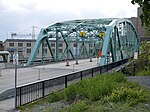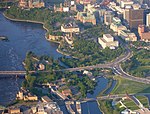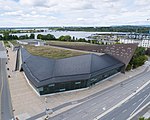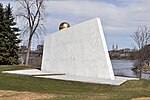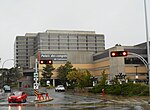The Canadian War Museum (French: Musée canadien de la guerre; CWM) is a national museum on the country's military history in Ottawa, Ontario, Canada. The museum serves as both an educational facility on Canadian military history, in addition to serving as a place of remembrance. The 440,000 square metres (4,700,000 sq ft) museum building is situated south of the Ottawa River in LeBreton Flats. The museum houses a number of exhibitions and memorials, in addition to a cafeteria, theatre, curatorial and conservation spaces, as well as storage space. The building also houses the Military History Research Centre, the museum's library and archives.
The Canadian War Museum was formally established in 1942, although portions of the museum's collections originate from a military museum that operated from 1880 to 1896. The museum was operated by the Public Archives of Canada until 1967, when the National Museums of Canada Corporation was formed to manage several national institutions, including the war museum. In the same year, the war museum was relocated from its original building to the former Public Archives of Canada building. Management of the museum was later assumed by the Canadian Museum of Civilization Corporation (later renamed the Canadian Museum of History Corporation) in 1990. Plans to expand the museum during the mid-1990s resulted in the construction of a new building at LeBreton Flats. Designed by Moriyama & Teshima Architects and Griffiths Rankin Cook Architects, the new Canadian War Museum building was opened to the public in 2005.
The museum's collection contains over 500,000 pieces of materials related to military history, including over 13,000 pieces of military art. In addition to its permanent exhibition, the museum has hosted and organized a number of travelling exhibitions relating to Canadian military history.

